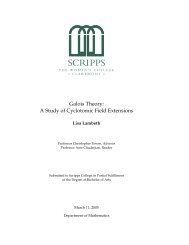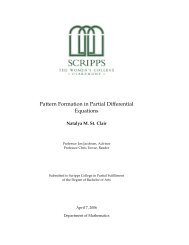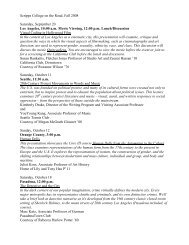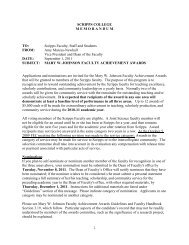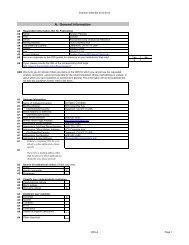Sophie Germain: mathématicienne extraordinaire - Scripps College
Sophie Germain: mathématicienne extraordinaire - Scripps College
Sophie Germain: mathématicienne extraordinaire - Scripps College
You also want an ePaper? Increase the reach of your titles
YUMPU automatically turns print PDFs into web optimized ePapers that Google loves.
The First Attempts 33<br />
4.2 The First Attempts<br />
We now return to our investigation of possible solutions to the equation<br />
x n + y n = z n when n > 2. Historically, the very first attempts at proving<br />
Fermat’s Last Theorem were made on n = 3, 4, and 5.<br />
4.2.1 n=3<br />
Leonhard Euler (1707-1783) gave a proof in 1753 that the equation x 3 + y 3 = z 3<br />
has no non-trivial integer solutions. Euler used a variation on the method<br />
of infinite descent, which we will discuss in detail below in section 4.2.2.<br />
Fifty years later, it was discovered that Euler’s proof was actually incomplete.<br />
This incomplete proof was available to <strong>Sophie</strong> <strong>Germain</strong>; she and Legendre<br />
worked on the case where n = 5 in a very similar fashion as shown<br />
below in section 4.3.1. It is reported that Lagrange “finished” Euler’s proof<br />
as a consequence of some of his work in the 1830’s. [6]<br />
4.2.2 n=4<br />
Fermat wrote his conjecture in the margin of his Oeuvres de Diophante; he<br />
never furnished a proof. Later, however, he illustrated his method of infinite<br />
descent specifically for n = 4.<br />
Infinite Descent.<br />
The process of infinite descent begins with an equation,<br />
for example, x n + y n = z m , and assumes that x 0 , y 0 , and z 0 are positive<br />
integer solutions. From the first solution, one derives a second solution of<br />
the same form, x n 1 + yn 1 = zm 1<br />
where x 1, y 1 , and z 1 are again positive integer











